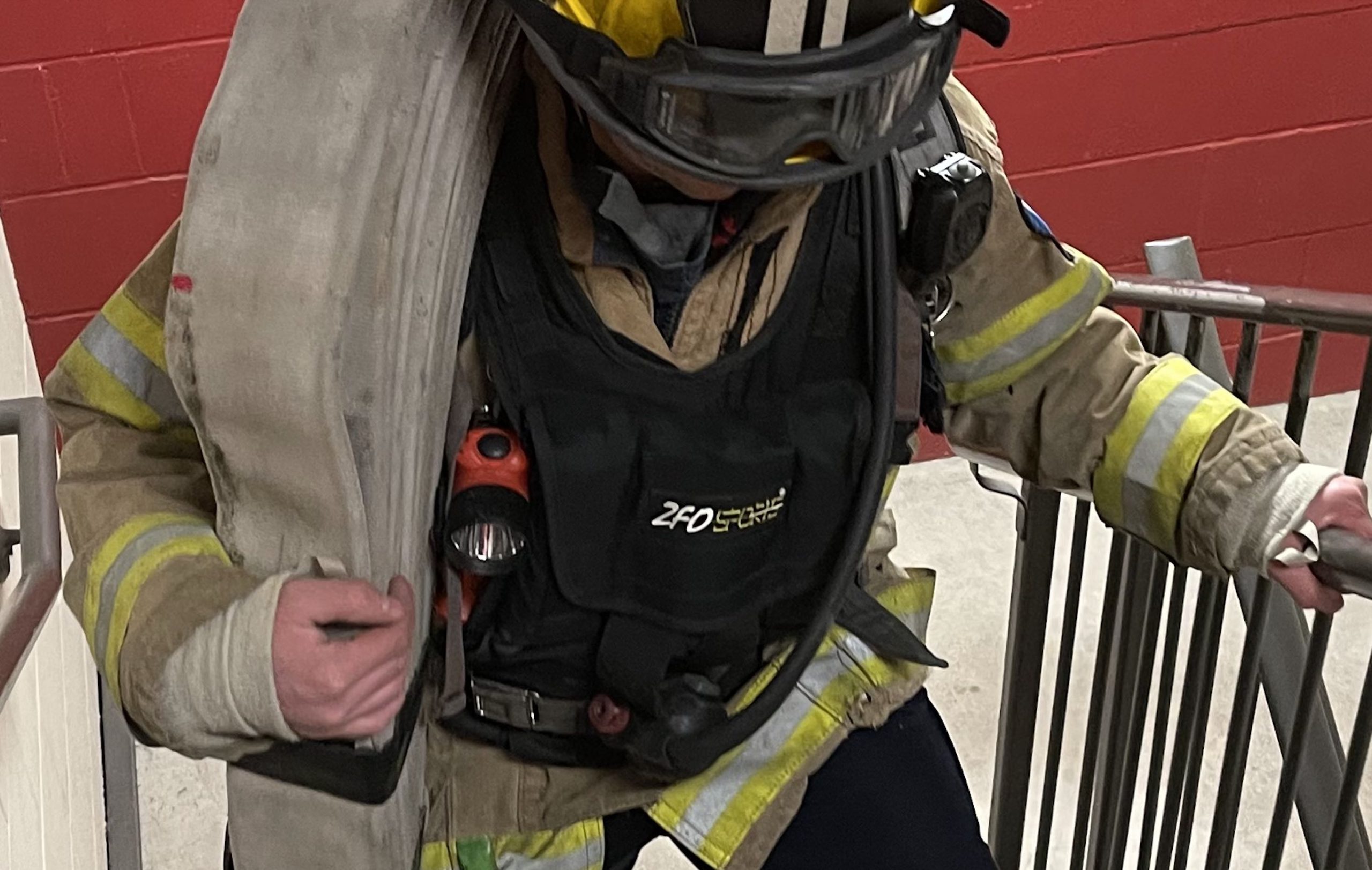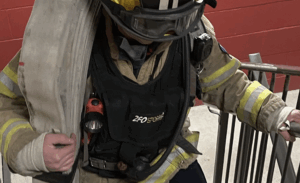The Firefighter Physical Ability Test (PAT) evaluates candidates through various tasks, crucial in determining their readiness for the demanding firefighter role. One of these tasks is the firefighter Stair Climb Hose Bundle Carry, which involves carrying a hose bundle up a flight of steps, typically six stories high.
This initial stage of the test serves as a pivotal assessment, setting the tone for the entire exam. It critically examines a candidate’s strength, endurance, and ability to navigate challenging terrains. Lack of preparation for this stage can impede performance throughout the test.
Here, we delve into an innovative training approach utilizing a specially designed salt-filled weightlifting bag to prepare for this rigorous task.
Table of Contents
Understanding the Hose Bundle Carry Event
Carrying a hose bundle up a flight of stairs simulates the arduous task of transporting a bulky and heavy hose up a flight of stairs—an essential skill for firefighters during emergencies. This exercise requires candidates to efficiently maneuver a rolled-up hose while ascending steps, testing physical strength and agility.
An Overview of The Timed-Physical Ability Test (T-PAT)
The Timed Physical Ability Test for firefighters is a rigorous assessment that mirrors the intensity of real firefighting scenarios. This dynamic challenge evaluates participants’ physical and mental prowess through demanding tasks. These tasks encompass a range of skills, including strength, agility, and strategic thinking, as participants navigate obstacles as firefighters strive to achieve their best times.
It’s a Competitive Testing Process
The T-PAT is a competitive test that resembles the Firefighter Combat Challenge – a national sporting event in which firefighters from the U.S. and the world compete in various fitness events. It’s a demanding five or six-event course in which firefighters compete for the fastest time.
Some fire departments use segments like this competition as a roadmap for their physical ability test because they mimic real-life firefighter scenarios.
Most do not use every component of every event. Instead, they modify events to reflect the needs and values of their unique situation. There will be variations between T-PAT tests from department to department, but all focus on fire scene job-related skills.
Common Attire and Challenges
- Candidates may be required to wear approved gear, including long pants, a helmet, eye protection, firefighter work gloves, and footwear.
- Candidates usually wear a self-contained breathing apparatus (SCBA) or a 50-pound weighted vest to simulate an SCBA.
- Events are placed in a sequence that best simulates fire scene situations while allowing a recovery walk between events.
- No running is allowed between events.
Sequence of Events
This test is typically a sequence of events that requires the candidate to progress along a predetermined path from event to event continuously.
Departments will choose different events or change the sequence of events. (There is not a standard version of the T-PAT.)
Common T-PAT events
While the specifics may vary, the test typically includes a range of tasks designed to mimic real-life firefighting scenarios. Some of the functions that could be part of the challenge include:
- Stair Climb: Stair Climb with Hose Bundle: Climb six flights of stairs with a weighted vest and SCBA while carrying a hose bundle, emulating the urgency of navigating a fire scene.
- Hose Hoist: Swiftly hoisting a hose roll to the sixth floor of an elevated platform, demonstrating upper body strength and coordination.
- Hose Drag: Drag a charged hose line 100’.
- Equipment Carry: Walk 75’ carrying equipment (typically either two saws or one box fan)
- Forcible Entry: Use a sledgehammer to advance a weighted sled prop (Keiser Sled) to simulate forcible entry.
- Rescue: Lift and drag a 165-pound dummy for 70’.
The Hose Bundle Carry Is a Common Event For Testing but used Frequently at The Fire Academy
The stair climb with the hose bundle is a staple in almost every firefighter’s physical ability test. Even if it’s not part of the test, you’ll inevitably be repeatedly maneuvering a hose bundle up and down flights of stairs during your time in the fire academy.
Elevate Your Training with this Innovative Salt-Filled Weightlifting Bag
Designed to replicate the weight and feel of a firefighter’s hose, the salt-filled weightlifting bag offers a unique training solution. This specially crafted bag allows candidates to simulate the weight and bulkiness of a hose, enabling targeted training to prepare for the specific demands of the Hose Bundle Carry.
Firefighter Physical Ability Test Training Bag
The FXF Hose Bundle Bag
SALT BAG + WEIGHT BAG TRAINING
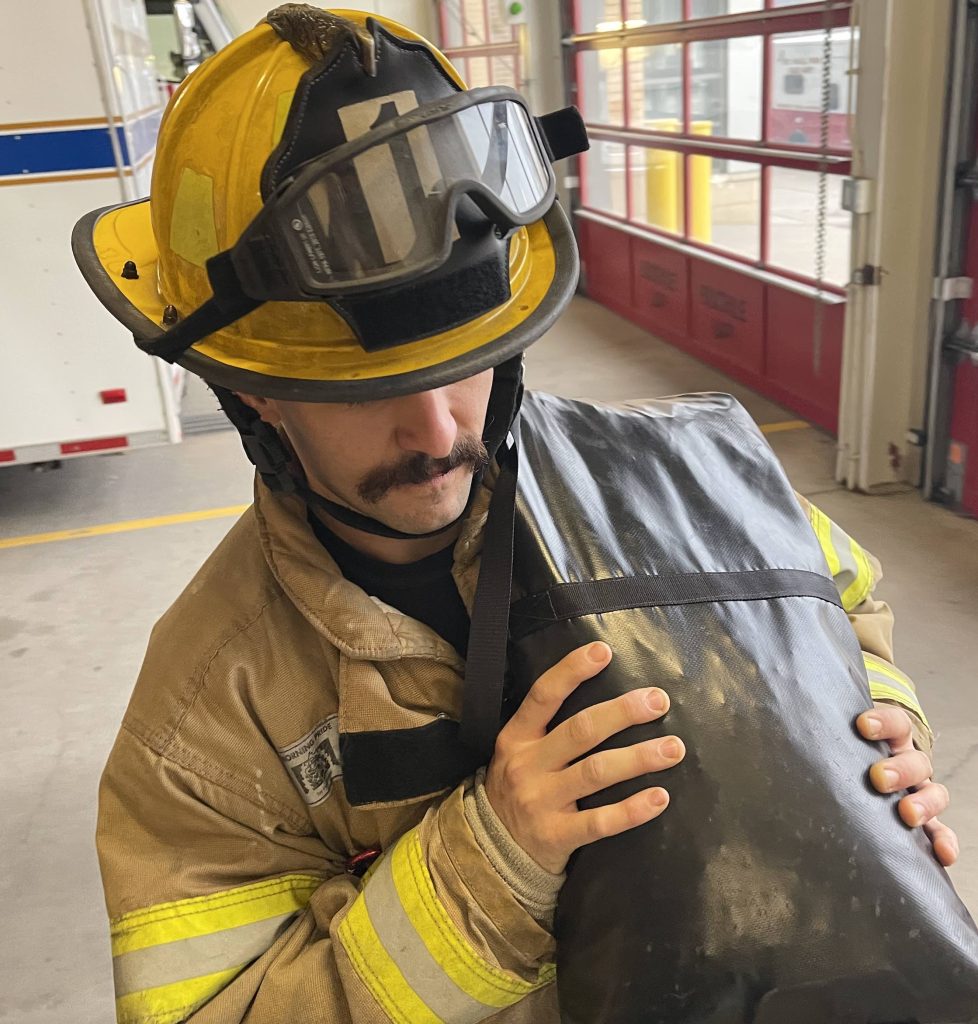

Put Your Salt Bags to Work
Join the Firefighter Xtreme Fitness training program and crush the firefighter physical ability test. Our workout bags are simple to use, scalable to all abilities, and designed for the firefighter’s physical examination but can be used for any workout, anywhere.
Heavy Duty Construction
- Each bag is constructed from heavy-duty vinyl coated polyester.
- Same heavy-duty fabric that’s used to make tough semi-truck tarps.
- A tensile strength of 641 lbs. allows maximum forces to be applied without failure.
- Bags are tested by firefighters and constructed to be stronger than any other on the market.
Specifications
- Made in the USA
- Waterproof
- Mildew and rot-resistant
- Ultraviolet light resistant
- Disinfect with wipes or spray.
- Firefighter tested and proven tough.
Versatility
The hose bundle salt bag isn’t limited to stair climbing; it is a versatile tool for training in various aspects of the physical ability test. While it’s designed for stair climbs, it can effectively aid in practicing other exercises such as shouldering the hose bundle, hose line pull, hose line drag, power tool equipment carry, box fan equipment carry, pipe pull thrust, horizontal forcible entry, axe chop, and Kaiser prop. Additionally, it’s ideal for simulating dragging, bear hugging, squatting, or carrying the rescue dummy, mimicking real-life scenarios encountered during firefighting training.
The Toughest Salt Bag Ever Built
Tested and Proven Tough
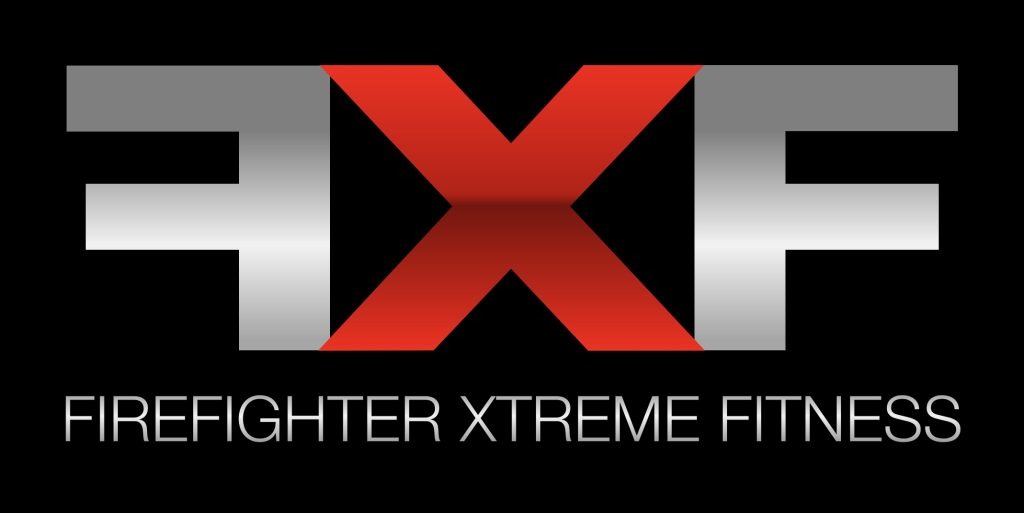
Physical Ability Test Training Program
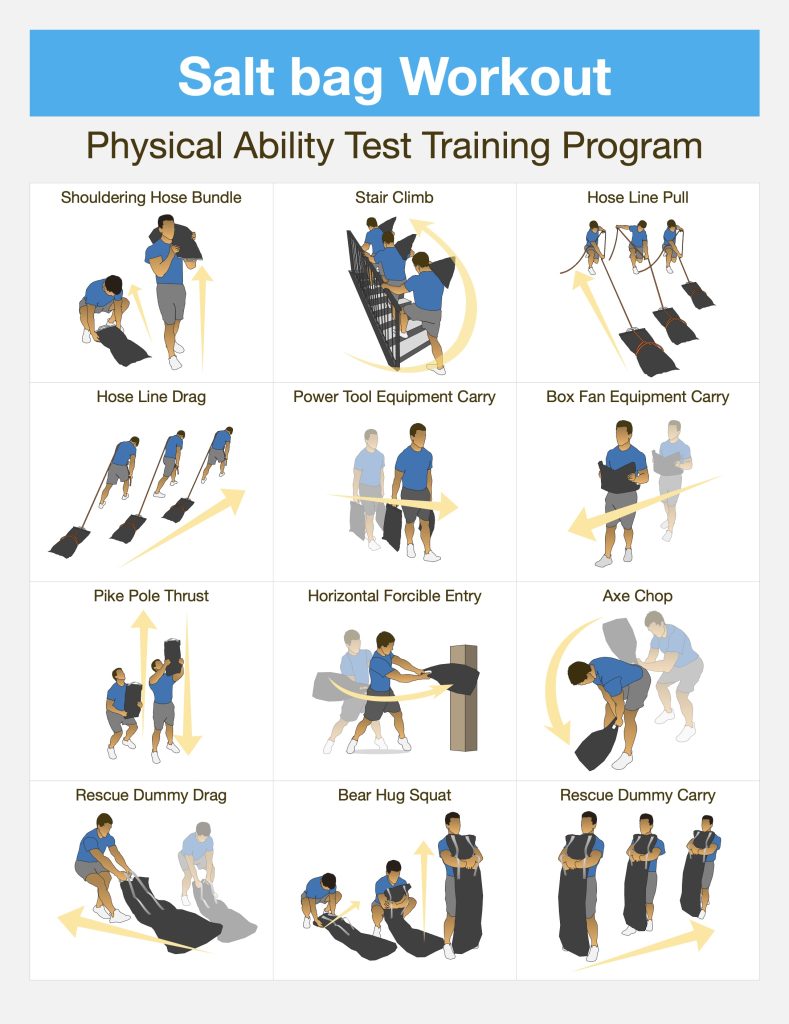
Final Preparations
As the firefighter’s physical ability test approaches, intensify training sessions with the salt-filled weightlifting bag. Conduct mock tests to evaluate progress, identify areas for improvement, and ensure readiness for the actual test scenario.
Training Approach
Utilizing the salt-filled weightlifting bag for training involves a comprehensive approach focusing on strength, endurance, technique, and stair-climbing proficiency.
- Strength and Endurance Training: Incorporate exercises such as lunges, squats, and stair climbs while carrying the salt-filled bag. This develops the lower body strength and endurance necessary for carrying the hose bundle-up steps.
- Technique Refinement: Practice carrying the bag up steps, emphasizing proper lifting techniques and efficient navigation through staircases to optimize performance during the test.
Advantages of the Salt-Filled Weightlifting Bag
- Realistic Simulation: The bag replicates the weight and feel of a hose, offering a more realistic training experience.
- Versatility: Its adjustable weight allows for progressive training, enabling candidates to increase the load as their strength improves gradually.
- Portability: Easy to transport and use in various settings, facilitating convenient and regular training sessions.
Conclusion
Preparing for the Hose Bundle Carry demands a specialized training approach. The salt-filled weightlifting bag is an innovative and practical tool, enabling candidates to simulate the challenges of carrying a hose upstairs, refining strength, endurance, and technique. By incorporating this training method into your preparation, you’ll be better equipped to tackle the Hose Bundle Carry confidently and efficiently during the firefighter physical ability test.
Learn How You Can Become A Firefighter
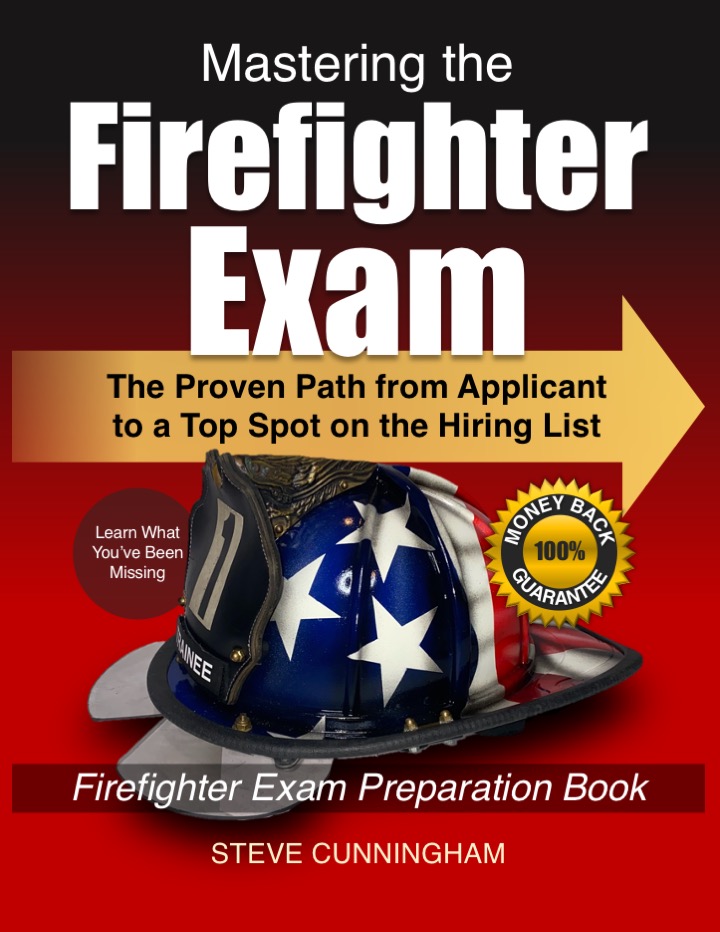
Mastering the Firefighter Exam is a complete guide on how to pass the firefighter exam with a top score. It simplifies the complicated hiring practices of big city fire departments and reveals insider information most candidates don’t know about.
If You Would Like To Know How To Get A Head Of Your Competition, This Book Is For You.

